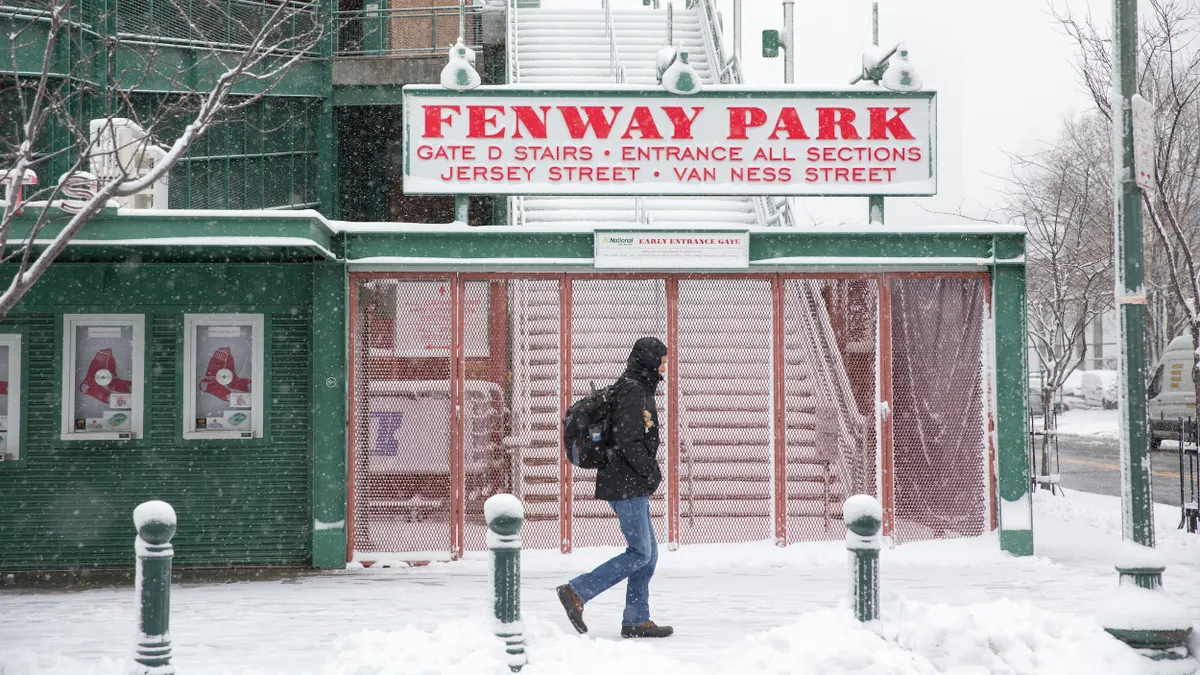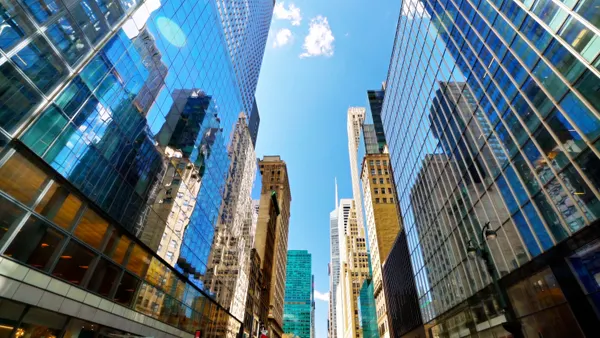In 2024, U.S. cities continue to adapt to the new normal four years after the shockwaves of 2020. Sporting events and concerts are larger than ever (looking at you, Taylor Swift and Beyoncé). Trends like streeteries and working from home persist while masks and hand sanitizer are seen less often. The world is getting warmer, and natural disasters are getting more severe and frequent. As pandemic-era federal funding dries up, with dire implications for public transit, federal support is increasing for decarbonization, climate resilience, zoning reform and more.
In the face of these challenges, cities will continue to address critical issues such as the housing shortage, the impact of fossil fuel use on the climate and the calls for more just and inclusive governments. That’s what we heard from Smart Cities Dive readers and other experts who responded to our call for 2024 predictions. Here’s a selection of their responses.
The following responses have been edited for clarity and length.
The shift toward greater digitalization and participatory policymaking will continue
Important shifts are shaping the future of cities. First is the accelerating transition from analog to digital to AI.
Cities are also moving from a narrow service-provider mentality to a platform mindset — one that facilitates robust participation from diverse stakeholders in problem-solving.
More and more, municipalities are generating policy with, instead of just for, residents. This has been a huge focus of our work at Bloomberg Philanthropies. This approach not only promises more effective programs and policies, it also builds the connections to communities — the social solidarity — so critical at a time of increasing polarization and illiberalism.
— James Anderson, head of Government Innovation Program, Bloomberg Philanthropies
Zoning changes will allow more housing construction
If 2024 follows 2023, that would mean the trend toward cities updating rules to allow more housing would continue. 2023 saw four primary ways cities acted to allow more homes: by eliminating parking minimums that drive up housing costs, by allowing apartments in more of the city, by allowing multiple homes on lots that used to only permit one and by allowing accessory dwelling units.
In recent years the biggest affordability improvements have come in cities and towns that had lots of apartments built. Homelessness has soared in places with housing shortages that pushed up rents, while homelessness has dropped where new housing reached the market and slowed rent growth. That relationship is so strong there’s every reason to expect it to continue in 2024.
— Alex Horowitz, director, Housing Policy Initiative, The Pew Charitable Trusts
Emissions reduction pressures will drive benchmarking and energy efficiency
Cities are prioritizing more efficient buildings as a way to reduce costs, create local jobs, improve safety and health during extreme weather and fight climate change.
The rise of building performance policies means more building owners and managers will need to start tracking and improving energy use and carbon emissions. Commercial tenants, in particular, drive a large amount of energy use and will need to work with their landlords.
[As of late 2023], 12 local and state governments have passed building performance standards that specify a minimum level of energy/climate performance for all buildings over a certain size, with fixed deadlines over the next three to 10 years. The National Building Performance Standards Coalition has more than 40 jurisdictions signed on to pass similar policies.
Pressure from investors, consumers, and other stakeholders plays a role in driving this change, as does the ongoing “flight to quality” in commercial real estate. Demand for low-carbon office properties is expected to outstrip supply.
— Marshall Duer-Balkind, director of policy programs, Institute for Market Transformation
Cities will revisit micromobility funding and regulatory approaches
Many docked bike share systems reliant on public subsidy are struggling or shutting down as budgets get tighter and funding runs out.
High demand has led to operational challenges with backlogs of bike repairs and redeployment issues. Legacy fleets are coming to the end of their usable lives and need upgrades to satisfy new rider preferences for electrification. 2024 will see an acceleration of this trend. Public subsidies for docked bike share will soon be weighed against other crucial city services, including public transit, which is facing its own fiscal cliff due to dwindling federal relief funding and a lack of fare box revenue due to ridership not yet returning to 2019 levels.
Many cities have cherished the rise in cycling rates spurred by the pandemic and have nurtured this with new protected bike lanes and bike-friendly policies. Despite constrained budgets, cities will want to lock in these gains and the benefits they yield: cleaner air, reduced traffic, increased equity in mobility, the extended reach of their public transit networks and more. One likely outcome of this dynamic is an increased municipal appetite for — and reliance on — privately provided dockless scooters and bikes that operate at no cost to taxpayers.
Crucially, to enable this transition, cities will have to reconsider and revise the high fees and onerous regulations that make it difficult for shared micromobility companies to stay in business. It will ultimately lead to a reconsideration of current policies in favor of regulations that better enable riders to access bikes and provide operators the ability to provide a quality, sustainable and long-lasting service.
— Shari Shapiro, head of global policy, Lime
Downtowns will diversify what they offer
Many of the country’s great downtowns will have to diversify uses and activity to overcome and outplay the typical real estate cycle of boom and bust.
Cities are no longer able to count on the office market driving all activity and related uses downtown, or on the city’s inherent desirability to attract employers and residents to the urban core. We now know the urban population will continue to grow, however, and downtowns must evolve. This means cultivating downtowns that are 24-hour communities.
Urban Land Institute members are currently advising cities across the country on zoning changes, incentives, and public-private partnerships that are needed to spur business competitiveness and mixed-use strategies such as office-to-residential conversions. In turn, these strategies bring into focus other ways to increase foot traffic and economic activity downtown, including enhancing retail-oriented and cultural uses of space, comprehensive branding and public relations campaigns, and improved safety and connectivity.
— Kelsey Steffen, executive director of advisory services, Urban Land Institute
New technology will transform intelligent transportation
Several significant technologies are poised to make a big impact on intelligent transportation in the next few years. We’ll see new advancements in smart infrastructure for cities and motorways, obligatory collision avoidance systems for railways, advanced systems for shuttles and buses for public transportation on dedicated routes, and increasing enhancements to security applications due to turbulent global political situations. Lidar will take a piece of the cake, but radar and camera technology will also play a role due to their lower costs and maintenance expenses.
— Conrad-Christian Kimmle, managing director, Seyond Europe


















